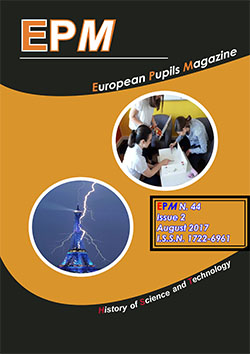Math Science Chemistry Economics Biology News Search
Colorimeters, ITIS Cannizzaro, Catania, Italy
Fig 1:
Colorimeter ELVI 1
Colorimeter with single “cuvette” and filter monochromator. Low precision measurement.
Fig 2:
Colorimeter ELVI 2
Colorimeter with two “cuvettes” and filter monochromator. Low precision measurement.
When we are on a cruise or on a boat and we watch the sea, why can’t we see the bottom? Why can we see it if we fill up the bathtub? What is happening?
Evidently, the intensity of the luminous cancellation diminishes with the increasing of the depth of the water. How is it possible to register this reduction? We can find the right solution in the spectrochemistry analysis of the matter. Spectroscopy is based on the theory that molecules interact with radiations of different length waves and this interactions create spectrum of different regions. In order to study spectroscopy we use and apply Lambert-Beer’s theory.
This law states the correlation between the absorbance A, the path length traversed, and the concentration of the absorbent substance:
A = k•c•d
where the concentration c is stated in mol/l and the path length d in cm. The constant proportionality and the relative spectral absorption coefficient k is a specific substance function of the wavelength.
If monochromatic light is used in the appropriate concentration range, Lambert-Beer Law is reliable with great accuracy. Consequently, the concentration of a substance dissolved in liquids or gases can be determined by measuring the absorbance A.
Transmittance
As a beam of light passes through an absorbing medium, the amount of light absorbed in any unit volume is proportional to the intensity of incident light times the absorption coefficient. Consequently, the intensity of an incident beam drops exponentially as it passes through the absorber. This relationship when expressed as Lambert's Law is:
T = 10-εcd or T = 10-A
Absorption
Colorimeter
- CAMPIONE BIANCO = BLANK: is the reference spectrum for the photometer
- APPARECCHIO DI REGISTRAZIONE = DETECTOR: is a device who measures the amount of light adsorbed by solution
- FENDITURA MOBILE = DIFFRACTION GRATING: device who allows to obtain a fraction of the light diffracted in certain wavelength relative to the reflection of a comparison mirror.
- SPECCHIO = MIRROR
- CELLULA FOTOELETTRICA = PHOTOELECTRIC CELL OR PHOTOCELL: is a device whose electrical characteristics (e.g. current, voltage or resistance) change when light is incident upon it
- CAMPIONE COLORATO = COLORED SAMPLE: is a solution who adsorbs different quantity of light depending on intensity colour of sample
Transmittance can be plotted against concentration, but the relationship is not linear. The negative log 10 of the transmittance is, however, linear with the concentration
Therefore, absorption is measured as:
A = -log 10 (I/Io) or A = -log 10 (T)
There are some instruments called colorimeters that work on these principles.
A colorimeter is generally a tool that characterizes colour samples to provide an objective measure of characteristics colour. In chemistry, the colorimeter is an apparatus that allows the absorbance of a solution at a particular frequency (colour) of visual light to be determined. Colorimeters hence make it possible to ascertain the concentration of a known solute, since it is proportional to the absorbance.
Different chemical substances absorb varying frequencies of the visible spectrum. Colorimeters rely on the principle that the absorbance of a substance is proportional to its concentration i.e., a more concentrated solution gives a higher absorbance reading.


